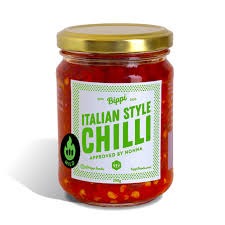
Italian cuisine is renowned the world over for its rich flavour profiles, use of fresh ingredients, and a heritage that dates back centuries. Both comforting and sophisticated, Italian dishes can warm the soul and delight the palate. An essential aspect of this beloved cuisine is its adaptability and the subtle ways that regional variations can alter a traditional recipe. One such variation that adds a bold twist to classic dishes is the bippi Italian style chilli.
Though not traditionally known for fiery heat, Italian food does incorporate a variety of spices that add depth and character. Bippi Italian style chilli is a condiment that is beginning to find its way into kitchens and restaurants, not only across Italy but also amongst international aficionados of Italian cuisine. Its unique blend of spices captures the essence of Italy’s regional cooking while offering a fresh burst of heat.
The Elements of Traditional Italian Cuisine
Understanding the impact of bippi Italian style chilli requires a brief exploration of traditional Italian culinary principles. Italians have a deep respect for ingredients, often highlighting simplicity over complexity. Herbs like basil and oregano, staples such as garlic, and the liberal use of olive oil are hallmarks of classic Italian cooking. These foundational ingredients allow the natural flavours of the food to shine through.
Another key element is regionality. From the mountains of the north to the sun-drenched south, the dishes of Italy are reflective of the geographical diversity and the resources available in each area. This is why something as simple as pasta sauce can vary significantly from one region to another, with each claiming its version as the most authentic and true to Italian roots.
Incorporating Bippi Italian Style Chilli into Italian Dishes
The introduction of bippi Italian style chilli into traditional recipes represents the evolving palate of modern diners who are seeking new experiences while still craving the comfort of familiar foods. The piquant chilli offers a contemporary twist, infusing a warmth that can elevate the dish without overpowering the authentic flavours.
For instance, consider the classic Aglio e olio, a simple pasta dish made with garlic, olive oil, and pasta. The introduction of bippi chilli can transform it, adding a new layer of flavour that is unexpected yet harmonious with the original recipe. Similarly, a dash of bippi chilli flakes can give an invigorating lift to a hearty Minestrone, introducing a pleasant heat that complements the soup’s robustness.
Another traditional dish where bippi chilli shines is in the preparation of arrabbiata sauce. While this sauce inherently contains a measure of spiciness, substituting traditional chilli peppers with bippi chilli can bring out a different profile, breathing new life into a well-loved classic.
Pairing Bippi Chilli with Other Ingredients
Culinary enthusiasts know that the success of a dish often lies in the balance of ingredients. Bippi Italian style chilli pairs exceptionally well with a multitude of flavours, especially those foundational to Italian cooking. Fresh tomatoes, basil, and creamy cheeses such as ricotta and mozzarella provide a canvas for the chilli’s spice, each bite offering a marriage of coolness and heat.
Incorporating bippi chilli into meat dishes, such as Bolognese or Osso Buco, adds a dimension that can be particularly satisfying in colder months. The chilli’s warmth provides a counterpoint to the richness of these heavier dishes, ensuring that each mouthful is as comforting as it is exciting.
READ MORE : Latest Cheddars Menu with Prices 2024
Regional Adaptations and Bippi Chilli
Italian cuisine is nothing if not regionally diverse. Each locality boasts its own signature dishes, and bippi chilli can be utilised to enhance these with a respectful nod to tradition while embracing innovation. In the seafood-rich regions, a sprinkle of bippi chilli can enliven a simple linguine alle vongole, while in the truffle-heavy areas of the north, it can cut through the earthiness of a decadent truffle pasta.
It’s important, however, to use bippi Italian style chilli judiciously. The aim is not to create a heat that overwhelms, but rather to augment and complement. For example, a Calabrian might add a touch more chilli to a peperonata, while a Tuscany native might prefer it as a delicate finishing touch.
The Balance of Flavour and Heat
What sets bippi Italian style chilli apart is not just its heat but also its flavour. A good bippi chilli condiment combines the bright fieriness of chilli peppers with aromatic nuances that can include hints of garlic, fennel, or oregano. It’s this sophisticated blend that allows it to weave into Italian dishes subtly, bridging the gap between the comfort of tradition and the excitement of the new.
The way in which bippi Italian style chilli is introduced can also affect the outcome. Whether it’s infused into olive oil to create a spicy drizzle for pizza, sprinkled atop bruschetta for a bit of zing, or mixed into marinades for grilling meats, the versatility of this ingredient is its strength.
Conclusion
Italian cuisine’s welcoming embrace of bippi Italian style chilli reflects an understanding that tradition can evolve and adapt without losing its essence. As diners become more adventurous and chefs continue to push creative boundaries, we can expect to see more of this dynamic fusion. From family kitchens to fine dining establishments, the transformative power of bippi chilli is a celebration of Italian culinary heritage meeting the modern palate. It respects the past and spices up the present, ensuring each dish is a journey of flavour, from the first bite to the last.
The integration of bippi Italian style chilli into Italian cooking is a testament to the endurance and elasticity of one of the world’s most adored cuisines. The gentle art of balancing the warmth of chilli with the rich tapestry of Italian flavours is a skill that entices the senses and warms the heart. As more culinary enthusiasts explore the spicy side of Italy, they will undoubtedly savor the transformation of traditional dishes, crafted with a pinch of spice and a generous measure of love.
Leave a Reply